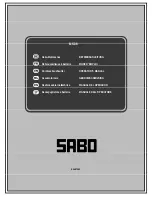
17
1
Note
•
Avoid using craft paper or fabric covered with decorative layer (that can easily separate), such as lamé or foil.
The separate layer may stick to the machine’s scanning device or feed rollers during operation, resulting in
damage to the machine. It may also damage the cutting blade. If such media is used or tested it is
recommended to clean the scanner glass at the bottom of the machine after every use (page 79).
Memo
•
When using a 12" × 12" (305 mm × 305 mm) mat, the maximum work area for cutting/drawing is 296 mm × 298
mm (11 3/4" × 11 3/4").
•
When using an optional 12" × 24" (305 mm × 610 mm) mat, the maximum work area for cutting/drawing is 296
mm × 603 mm (11 3/4" × 23 3/4").
•
Some fabrics with uneven surfaces can be cut if turned upside down.
Mat
Sheet for fabric cutting
Use one of the following two sheets
for fabric cutting when cutting
fabric.
Standard mat
(purple and
turquoise)
This is a mat with a high adhesive
strength.
Use this mat when cutting fabric.
*
Use the low tack adhesive mat with
copy paper and smooth paper.
Since the standard mat has a high
adhesive strength, materials may
remain stuck to the mat, causing the
mat to become unusable.
Iron-on fabric
appliqué
contact sheet
(white backing)
(See page 19)
•
Reinforces the fabric so that various
patterns can be cut out.
•
Original texture may change
because it remains attached to the
back of fabric.
*
For use with the standard mat.
*
Do not place fabric backed with
iron-on contact sheet directly onto a
mat with high tack fabric support
sheet.
Middle tack
adhesive mat
(pink and
turquoise)
This is a mat with a medium adhesive
strength.
High tack
adhesive fabric
support sheet
(See page 21)
•
For best results when cutting fabric,
attach the high tack adhesive fabric
support sheet to the standard mat in
order to increase the strength of the
adhesive.
•
Depending on the shape, the pattern
may not be cleanly cut.
Low tack
adhesive mat
(turquoise)
This is a mat with a low adhesive
strength. It is suitable for copy paper
and smooth paper.
















































